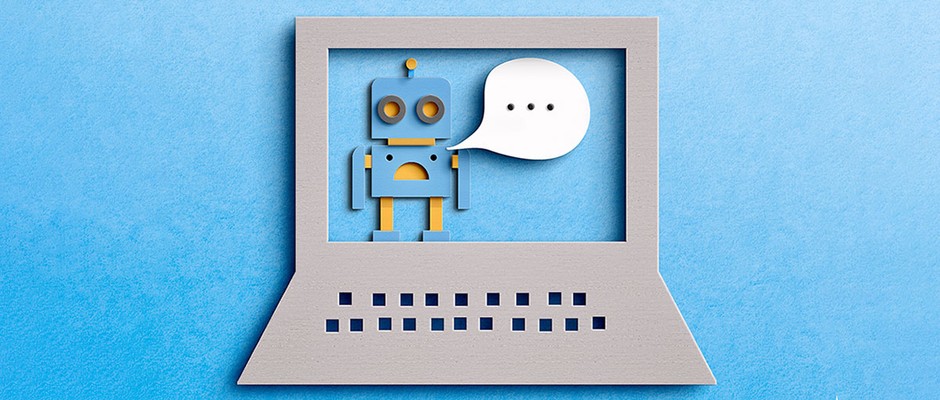
ChatGPT: Everything you need to know about OpenAI's GPT-4 tool
OpenAI is back in the headlines with news that it is updating its viral ChatGPT with a new version called GPT-4. But when will this be available, how does it work and can you use it?
ChatGPT has gone from being a fun tool for artificial intelligence (AI) enthusiasts to becoming one of the world's favourite talking points, attracting excitement, fear, confusion, legal issues and a huge amount of money from all sides.
Created by OpenAI, one of the best known names in AI, ChatGPT has come a long way in the past year. It has recently seen a major upgrade in its abilities, with OpenAI officially launching GPT-4.
While they are not exactly catchy names, GPT-3 and now 4 are actually the internet's best-known language-processing AI models. Since ChatGPT was announced, it has been banned in select schools, called out by governments and utilised by major companies like Microsoft.
Now, the company is looking to profit from their popular tool with a pay-to-use version called ChatGPT Pro and plans for a future 'ChatGPT Business' model. But as the company grows, it has faced more and more pushback.
So what is ChatGPT? What does it do? And is this really the future of AI? We've answered these questions and more down below.
ChatGPT: latest news
UK launches AI investigation
OpenAI, along with other leading AI companies, have come under fire by a number of different organisations recently, most recently the UK Competition and Markets Authority. The competition watchdog has raised concern with the race to commercialise artificial intelligence technology, calling for a review of the sector, including ChatGPT.
This is a concern echoed in the US with the White House calling in major AI companies to speak to the Vice President on safety concerns.
Along with calls of concern from major heads in the tech industry, artificial intelligence research could be forced to slow down or implement severe restrictions.
ChatGPT Business
Originally, there was just one version of ChatGPT available, then the company launched a superior 'ChatGPT Plus' with added features.
OpenAI has now revealed plans for a business version of the platform. Not much has been revealed about this version but there are plans to release it in upcoming months.
The company has stated that this would give businesses "more control over their data as well as enterprises seeking to manage their end users.
Rise of ChatGPT malware
With such a rapid rise in usage has come some confusion around ChatGPT and the tools that can use it.
Hackers have begun to use this confusion to create malware hidden within fake ChatGPT tools.
Meta has reported a number of malware groups using the ChatGPT name to spread malicious malware to user's devices.
This is done by promoting these tools through sponsored ads on Facebook, prompting users to click through.
What is GPT-3, GPT-4 and ChatGPT?

GPT-3 (Generative Pretrained Transformer 3) and GPT-4 are state-of-the-art language processing AI models developed by OpenAI. They are capable of generating human-like text and have a wide range of applications, including language translation, language modelling, and generating text for applications such as chatbots. GPT-3 is one of the largest and most powerful language processing AI models to date, with 175 billion parameters.
Its most common use so far is creating ChatGPT - a highly capable chatbot. To give you a little taste of its most basic ability, we asked GPT-3's chatbot to write its own description as you can see above. It’s a little bit boastful, but completely accurate and arguably very well written.
More like this
In less corporate terms, GPT-3 gives a user the ability to give a trained AI a wide range of worded prompts. These can be questions, requests for a piece of writing on a topic of your choosing or a huge number of other worded requests.
Above, it described itself as a language processing AI model. This simply means it is a program able to understand human language as it is spoken and written, allowing to understand the worded information it is fed, and what to spit back out.
How much does ChatGPT cost and how can you use it?
ChatGPT is very easy to sign up for and use, simply:
- head over to the ChatGPT website and create an account.
- You'll need to wait until your account has been accepted (you can skip this step if you have an account from Dall-E 2).
- Logging in will present you with a very simple page. You are offered some example prompts, and some information about how ChatGPT works.
- At the bottom of the page is a text box. This is where you can ask ChatGPT any of your questions or prompts.
Currently, ChatGPT remains free-to-use software. However, OpenAI has now announced ChatGPT Pro - a pay-to-use version with added benefits.
This version of the software will cost $20 (£16) a month, offering users priority access, quicker load times and access to updates and new features before anyone else.
For now the free version remains but it is unclear if this will change in the future.
How is GPT-4 different to GPT-3?
In essence, GPT-4 is the same as its predecessor GPT-3. However, there are some new features that boost the software's abilities.
Mainly, GPT-4 includes the ability to drastically increase the number of words that can be used in an input... up to 25,000, 8 times as many as the original ChatGPT model.
Equally, OpenAI has stated that the latest version of their technology makes fewer mistakes that they are calling 'hallucinations'. Previously, ChatGPT could become confused, offering up a nonsensical answer to your question, or even inputting stereotypes or false information.
Additionally, GPT-4 is better at playing with language and expressing creativity. In OpenAI's demonstration of the new technology, ChatGPT was asked to summarise a blog post only using words that start with the letter 'g'. It also has a better understanding of how to write poetry or creative writing, but it is still by no means perfect.

On top of this, OpenAI also displayed the potential of using images to initialise prompts. For example, the team showed an image of a fridge full of ingredients with the prompt "what can I make with these products?". ChatGPT then returned a step-by-step recipe.
While it wasn't demonstrated, OpenAI is also proposing the use of video for prompts. This would, in theory, allow users to input videos with a worded prompt for the language model to digest.
Creating recipes with images is a clever use of the technology, but it is only the tip of how images could be used with ChatGPT. The company also demonstrated the ability to create a whole website that successfully ran JavaScript with just a handwritten sketch of a website.
As a tool to complete jobs normally done by humans, GPT-3 was mostly competing with writers and journalists. However, GPT-4 is being shown to have the ability to create websites, complete tax returns, make recipes and deal with reams of legal information.
ChatGPT faces bans and restrictions
Despite ChatGPTs huge popularity and rise to fame, it hasn't been smooth sailing for the product. While there are those who don't agree with its usage, some have gone the extra step to completely ban the software.
Samsung has restricted its use by employees, as have a number of schools and other places of education.
On an even larger scale, ChatGPT has now been flat-out banned by a number of countries. This includes Italy, Russia, China, Cuba, Iran and Syria, along with a host of other countries in conversation on limiting its use.
While most of these countries were final in their decision on ChatGPT, Italy has stated that it would rescind its ban if OpenAI could fix certain GDPR issues.
Concerns for the future
A general apprehension has followed artificial intelligence throughout its history and things are no different with ChatGPT. Critics have been quick to raise the alarms over this technology, but now even those closest to it are utilising caution.
An open letter has been drafted calling for all AI labs to pause for at least six months on the development of systems more powerful than GPT-4. This would include OpenAI's work on GPT-5 - the next version of technology ChatGPT will eventually run on.
This open letter has been signed by prominent AI researchers, as well as figures within the tech industry including Elon Musk, Steve Wozniak and Yuval Noah Harari.
This letter states that the pause should be public and verifiable, arguing that companies like OpenAI, Microsoft and Google are entering a profit-driven race to develop and release new AI models at a dangerous pace.
This comes at the same time as a report from Goldman Sachs that suggested 300 million full-time jobs could be impacted by AI systems like ChatGPT, escalating existing concerns around these platforms.
When will GPT-4 be available?
Now that GPT-4 has been announced, when will you be able to use the latest version of ChatGPT? At first, the GPT-4 version of ChatGPT will be available to people on the Pro version of the software (a $20/month premium plan).
This plan is currently only available via a waiting list with a pretty long queue. However, it does come with other benefits like availability when demand is high and faster response speeds.
Whether or not the free version will get updated is unclear right now. If OpenAI does decide to update the free plan to GPT-4, it likely won't be for quite a while.
Alternatively, Microsoft's new version of Bing is currently running GPT-4. This also has a waitlist to join but unlike ChatGPT Pro, this is free-to-use.
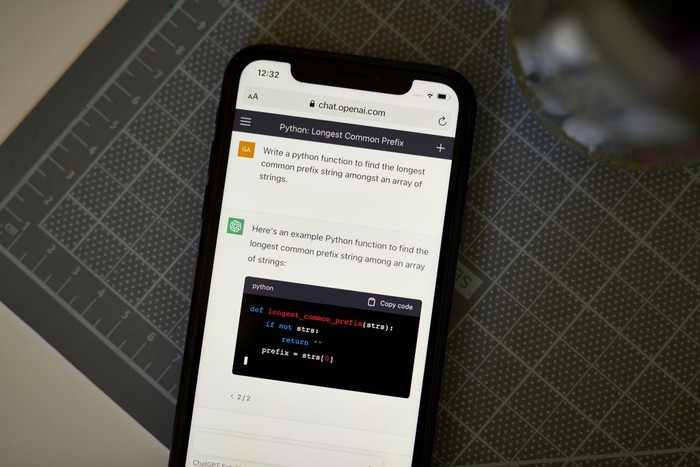
Where will GPT-4 be used?
GPT-3 was already being adapted by a lot of big companies, inputting the technology into search engines, apps and software, but OpenAI seems to be pushing GPT-4 even harder.
Microsoft's Bing is the main user of the technology right now, but OpenAI has reported that the software is being used by companies like Khan Academy to help students with coursework and give teachers ideas for lessons.
Equally, the language-learning app Duolingo has got involved with something called 'Duolingo Max' with two features. One will help explain why your answer to a question was right or wrong, the other will setup role plays with an AI to play out language in different scenarios.
More companies are adopting this technology, including the payment processing company Stripe and customer service brand Intercom.
What can it do?
With its 175 billion parameters, its hard to narrow down what GPT-3 does. The model is, as you would imagine, restricted to language. It can’t produce video, sound or images like its brother Dall-E 2, but instead has an in-depth understanding of the spoken and written word.
This gives it a pretty wide range of abilities, everything from writing poems about sentient farts and cliché rom-coms in alternate universes, through to explaining quantum mechanics in simple terms or writing full-length research papers and articles.

While it can be fun to use OpenAI’s years of research to get an AI to write bad stand-up comedy scripts or answer questions about your favourite celebrities, its power lies in its speed and understanding of complicated matters.
Where we could spend hours researching, understanding and writing an article on quantum mechanics, ChatGPT can produce a well-written alternative in seconds.
It has its limitations and its software can be easily confused if your prompt starts to become too complicated, or even if you just go down a road that becomes a little bit too niche.
Equally, it can’t deal with concepts that are too recent. World events that have occurred in the past year will be met with limited knowledge and the model can produce false or confused information occasionally.
OpenAI is also very aware of the internet and its love of making AI produce dark, harmful or biased content. Like its Dall-E image generator before, ChatGPT will stop you from asking the more inappropriate questions or for help with dangerous requests.
How does it work?
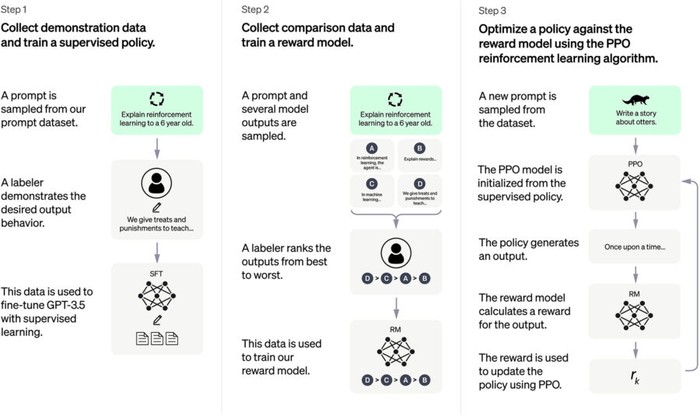
On the face of it, GPT-3's technology is simple. It takes your requests, questions or prompts and quickly answers them. As you would imagine, the technology to do this is a lot more complicated than it sounds.
The model was trained using text databases from the internet. This included a whopping 570GB of data obtained from books, webtexts, Wikipedia, articles and other pieces of writing on the internet. To be even more exact, 300 billion words were fed into the system.
As a language model, it works on probability, able to guess what the next word should be in a sentence. To get to a stage where it could do this, the model went through a supervised testing stage.
Here, it was fed inputs, for example “What colour is the wood of a tree?”. The team has a correct output in mind, but that doesn’t mean it will get it right. If it gets it wrong, the team inputs the correct answer back into the system, teaching it correct answers and helping it build its knowledge.
It then goes through a second similar stage, offering multiple answers with a member of the team ranking them from best to worst, training the model on comparisons.
What sets this technology apart is that it continues to learn while guessing what the next word should be, constantly improving its understanding of prompts and questions to become the ultimate know-it-all.
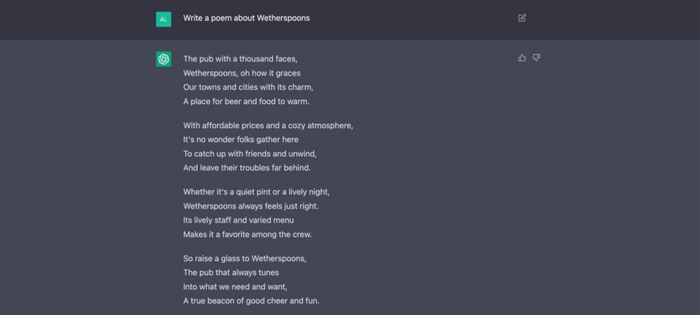
Think of it as a very beefed-up, much smarter version of the autocomplete software you often see in email or writing software. You start typing a sentence and your email system offers you a suggestion of what you are going to say.
Are there any other AI language generators?
While GPT-3 has made a name for itself with its language abilities it isn’t the only artificial intelligence capable of doing this. Google’s LaMDA made headlines when a Google engineer was fired for calling it so realistic that he believed it to be sentient.
There are also plenty of other examples of this software out there created by everyone from Microsoft to Amazon and Stanford University. These have all received a lot less attention than OpenAI or Google, possibly because they don’t offer up fart jokes or headlines about sentient AI.
Most of these models are not available to the public, but OpenAI has begun opening up access to GPT-3 during its test process, and Google’s LaMDA is available to selected groups in a limited capacity for testing.
Google breaks its Chatbot down into talking, listing and imagining, providing demos of its abilities in these areas. You can ask it to imagine a world where snakes rule the world, ask it to generate a list of steps to learn to ride a unicycle, or just have a chat about the thoughts of dogs.
Where ChatGPT thrives and fails
The GPT-3 software is obviously impressive, but that doesn't mean it is flawless. Through the ChatGPT function, you can see some of its quirks.
Most obviously, the software has a limited knowledge of the world after 2021. It isn't aware of world leaders that came into power since 2021, and won't be able to answer questions about recent events.
This is obviously no surprise considering the impossible task of keeping up with world events as they happen, along with then training the model on this information.
Equally, the model can generate incorrect information, getting answers wrong or misunderstanding what you are trying to ask it.
If you try and get really niche, or add too many factors to a prompt, it can become overwhelmed or ignore parts of a prompt completely.
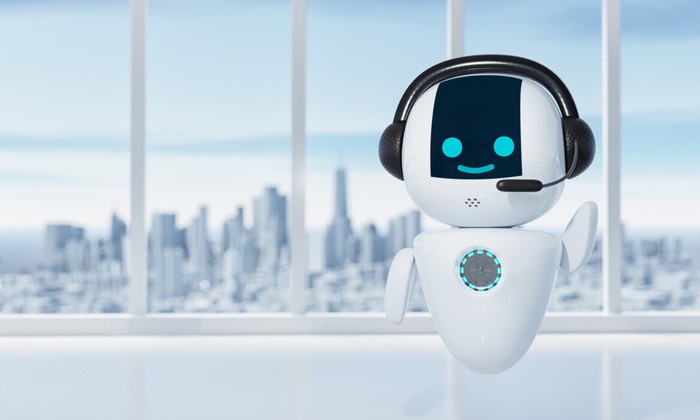
For example, if you ask it to write a story about two people, listing their jobs, names, ages and where they live, the model can confuse these factors, randomly assigning them to the two characters.
Equally, there are a lot of factors where ChatGPT is really successful. For an AI, it has a surprisingly good understanding of ethics and morality.
When offered a list of ethical theories or situations, ChatGPT is able to offer a thoughtful response on what to do, considering legality, people's feelings and emotions and the safety of everyone involved.
It also has the ability to keep track of the existing conversation, able to remember rules you've set it, or information you've given it earlier in the conversation.
Two areas the model has proved to be strongest are its understanding of code and its ability to compress complicated matters. ChatGPT can make an entire website layout for you, or write an easy-to-understand explanation of dark matter in a few seconds.
Where ethics and artificial intelligence meet
Artificial intelligence and ethical concerns go together like fish and chips or Batman and Robin. When you put technology like this in the hands of the public, the teams that make them are fully aware of the many limitations and concerns.
Because the system is trained largely using words from the internet, it can pick up on the internet’s biases, stereotypes and general opinions. That means you’ll occasionally find jokes or stereotypes about certain groups or political figures depending on what you ask it.
For example, when asking the system to perform stand-up comedy, it can occasionally throw in jokes about ex-politicians or groups who are often featured in comedy bits.
Equally, the models love of internet forums and articles also gives it access to fake news and conspiracy theories. These can feed into the model’s knowledge, sprinkling in facts or opinions that aren’t exactly full of truth.
In places, OpenAI has put in warnings for your prompts. Ask how to bully someone, and you'll be told bullying is bad. Ask for a gory story, and the chat system will shut you down. The same goes for requests to teach you how to manipulate people or build dangerous weapons.
Will ChatGPT be banned in schools?
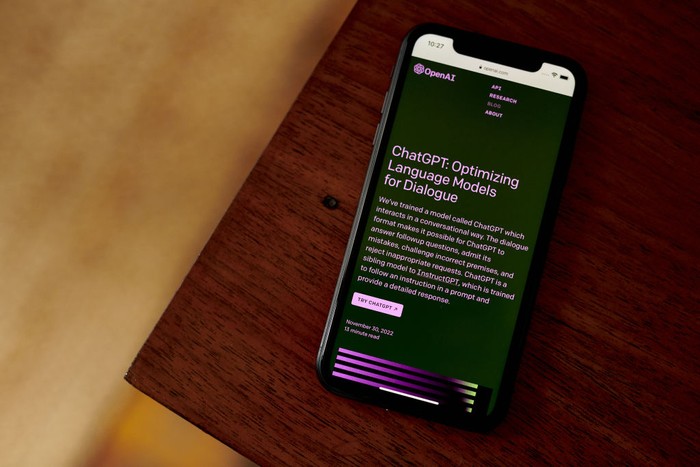
While a number of companies are looking to implement ChatGPT, in other areas it is quickly being banned.
In New York, the city's education department has ruled that the tool will be forbidden across all devices and networks in New York public schools.
There are two main reasons for this decision. First, the chat model has been shown to make mistakes and isn't always accurate, especially with information from the past year.
Secondly, there is a real risk of plagiarism with students able to get ChatGPT to write their essays for them.
While New York is the first place to publicly ban the software, it is likely to be a decision made elsewhere too. However, some experts have argued that this software could actually enhance learning.
"ChatGPT and other AI-based language applications could be, and perhaps should be, integrated into school education. Not indiscriminately, but rather as a very intentional part of the curriculum. If teachers and students use AI tools like ChatGPT in service of specific teaching goals, and also learn about some of their ethical issues and limitations, that would be far better than banning them," says Kate Darling, a research scientist at the MIT Media Lab.
"But, in absence of resources for teachers to familiarise themselves with the technology, schools may need to enact some policies restricting its use."
In this way, Darling emphasises a belief held by many in the world of artificial intelligence. Instead of ignoring or banning it, we should learn how to interact with it safely.
This is an opinion mirrored by Sam Illingworth, an associate professor in the department of Learning Enhancement at Edinburgh Napier University.
"AI is very much here to stay, so why try to fight it? These are tools that our students will be using in the workforce, so it seems very strange to say don't use them for three years, pretending they don't exist for now," says Illingworth.
"These are things that have the potential to reduce workload and improve efficiency, our responsibility as educators is to decide how to utilise it."
Artificially intelligent eco-systems
Artificial intelligence has been in use for years, but it is currently going through a stage of increased interest, driven by developments across the likes of Google, Meta, Microsoft and just about every big name in tech.
However, it is OpenAI which has attracted the most attention recently. The company has now made an AI image generator, a highly intelligent chatbot, and is in the process of developing Point-E - a way to create 3D models with worded prompts.
In creating, training and using these models, OpenAI and its biggest investors have poured billions into these projects. In the long-run, it could easily be a worthwhile investment, setting OpenAI up at the forefront of AI creative tools.
About our experts, Kate Darling and Sam Illingworth
Dr Kate Darling is a research scientist at the MIT Media Lab. Her interest is in how technology intersects with society.
Sam Illingworth is an associate professor in the department of learning enhancement at Edinburgh Napier University.
Read more:
Authors
Sponsored Deals

May Half Price Sale
- Save up to 52% when you subscribe to BBC Science Focus Magazine.
- Risk - free offer! Cancel at any time when you subscribe via Direct Debit.
- FREE UK delivery.
- Stay up to date with the latest developments in the worlds of science and technology.





